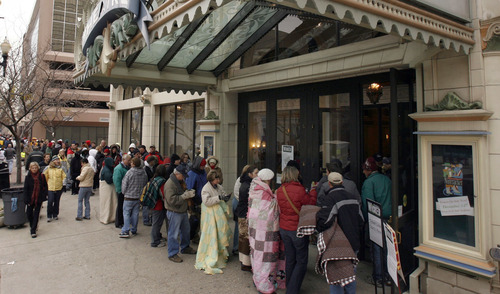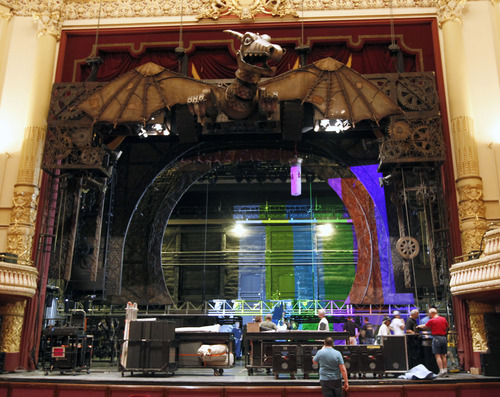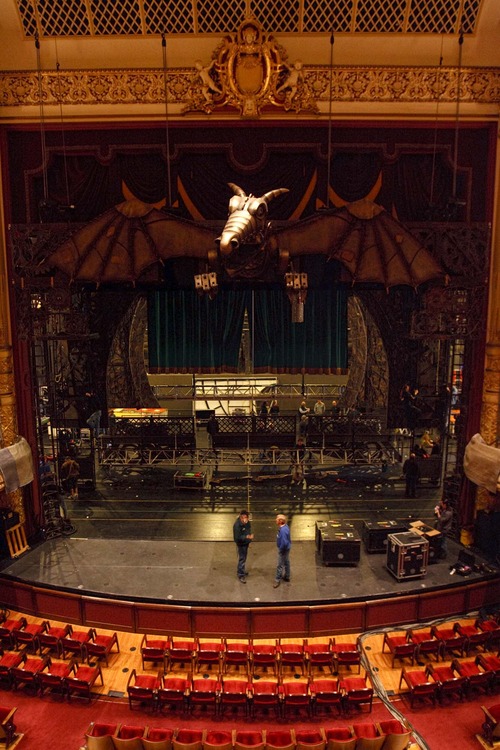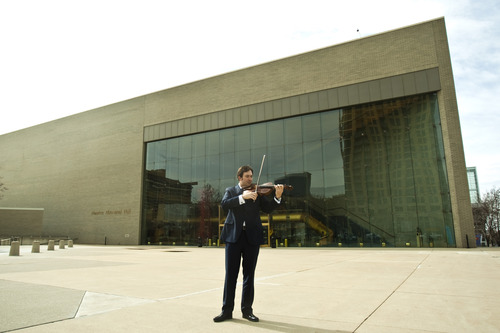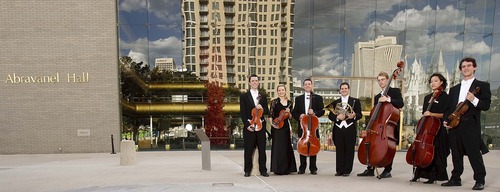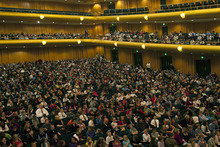This is an archived article that was published on sltrib.com in 2013, and information in the article may be outdated. It is provided only for personal research purposes and may not be reprinted.
If we build it, will they come?
The planned 2,500-seat Utah Performing Arts Center (UPAC) represents big bucks and a new chapter in how Salt Lake City area taxpayers support the arts.
Its boosters say the mega-theater, scheduled to open near 100 South and Main in March 2016, will raise Salt Lake City's status and put it on the A-list for first-run Broadway-style touring shows such as "Wicked," "The Lion King" and "The Book of Mormon" musical.
But UPAC's success is predicated on big audiences attending a lot of shows. The operating agreement between Salt Lake City and Salt Lake County outlines 100 or more performances annually being filled to 60 percent capacity on average. (A touring Broadway show, for example, may tally seven or more performances within a week, depending on matinees.)
Such a schedule, city officials say, would allow the $110 million taxpayer facility to be self-sustaining once it is built — without additional tax revenue.
Such a playbill, however, raises questions about the viability of existing entertainment venues. How many shows and concerts can northern Utah support?
The city and county are poised to adopt two agreements that would define their joint ownership of UPAC and how it would be operated. But a vote scheduled by the City Council and County Council was pushed back this week as the two sides continued to negotiate the fine points of the operating agreement.
Among its many provisions, the contract would set aside $600,000 annually to offset negative impacts the new playhouse would have on other entertainment venues operated by the county, most notably the 1,876-seat Capitol Theatre and the 2,768-seat Abravanel Hall. Capitol averages about 130 performances a year at 70 percent capacity. Abravanel posts similar numbers.
The county also operates the Rose Wagner Performing Arts Center, which can accommodate an audience of 670.
The agreement makes no mention of other venues, such as Kingsbury Hall at the University of Utah. It, too, could be impacted by the Main Street mega-theater.
The proposed operating agreement sets out these tenets: The county must book no fewer than 100 "Broadway and family events" annually, based on a three-year average. If its schedule includes other kinds of concerts or shows, then, according to the contract, it must book "138 popular entertainment events, including Broadway and family events."
And the county must ensure an average attendance rate of at least 60 percent.
"Failure to meet these targets will result in a material breach and is grounds for termination of the operating agreement," according to the contract.
It's unlikely the city would drop the county as the operator if those targets are not met, said Salt Lake City Council Chairman Kyle LaMalfa, but the language in the agreement ensures the county must not book shows in other venues at the expense of UPAC.
Kingsbury Hall Interim Executive Director John Caywood said the proposed UPAC schedule most likely will hurt that venue and others.
"It definitely will impact other venues," he said. "It definitely will impact us."
This year, Kingsbury will stage 165 performances. The 1,992-seat theater averaged 62 percent of capacity attendance last year, Caywood said.
"Our organization expects to lose $300,000 the first year [of UPAC] operation," he said, "due directly to movement that goes downtown."
Shows and audiences lost to UPAC could cost the Capitol Theatre and Abravanel Hall close to $1 million annually, said Philip Jordan, division director for Salt Lake County Center for the Arts. But that will make room at those venues for other, less expensive shows that will earn back about $400,000 of the loss, he said.
In the end, Salt Lake City audiences will have more shows to choose from, Jordan said. And the new theater will put the city in a league with Seattle, San Francisco, Denver and Los Angeles for attracting touring productions.
"We are in a place to holistically grow into a destination that Salt Lake aspires to," he said.
Salt Lake City and its Redevelopment Agency would own 75 percent of the facility. Salt Lake County would own 25 percent and operate UPAC through its Center for the Arts, according to the proposed ownership agreement.
City and county officials say UPAC will be an economic boon by luring visitors who will stay over in hotels and shop and dine downtown. LaMalfa described the theater as a "regional" attraction that will draw people from across Utah, as well as Idaho, Wyoming and Nevada.
A study commissioned by Salt Lake City from Nevada-based Garfield Traub Swisher found that UPAC would foster an annual $9.4 million general economic expansion, said Helen Langan, senior adviser to Mayor Ralph Becker.
Utah Performing Arts Center — where the profits will go (in order of priority)
1. $1 million • One-time payment into an operating reserve account.
2. $850,000 • Annually into a capital reserve account.
3. $600,000 • Annually to offset impacts on the Capitol Theatre and Abravanel Hall.
4. $350,000 • Annually to Salt Lake City.
5. Next $1 million • Split 50/50 between Salt Lake City and Salt Lake County.
6. Any additional profit • To be split 75/25 between city and county.
Source: Proposed operating agreement between Salt Lake City and Salt Lake County.




